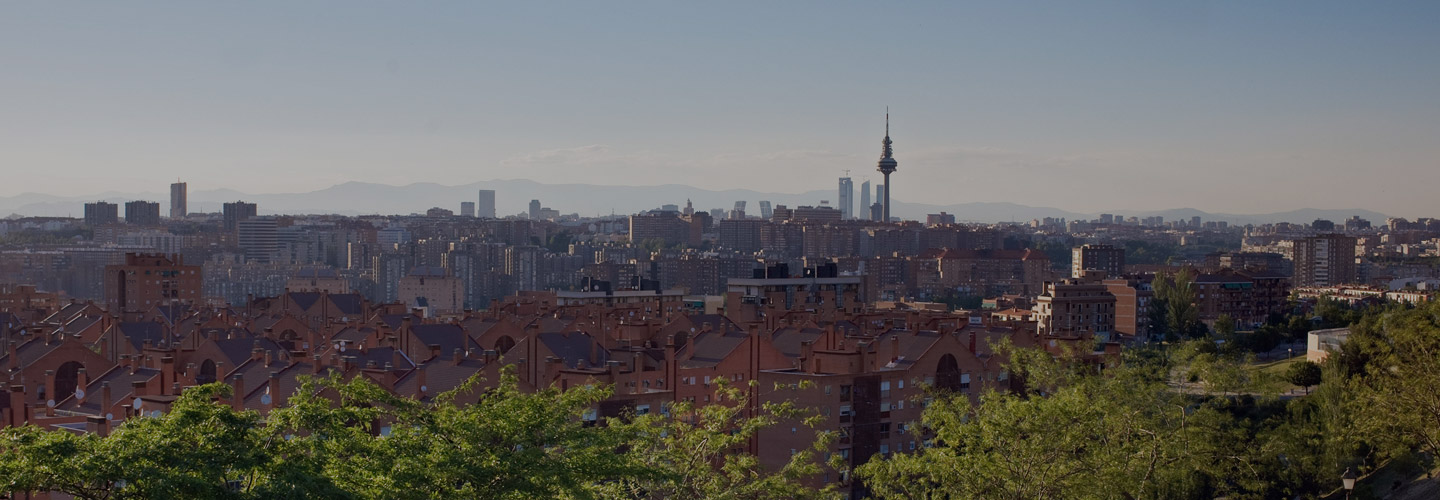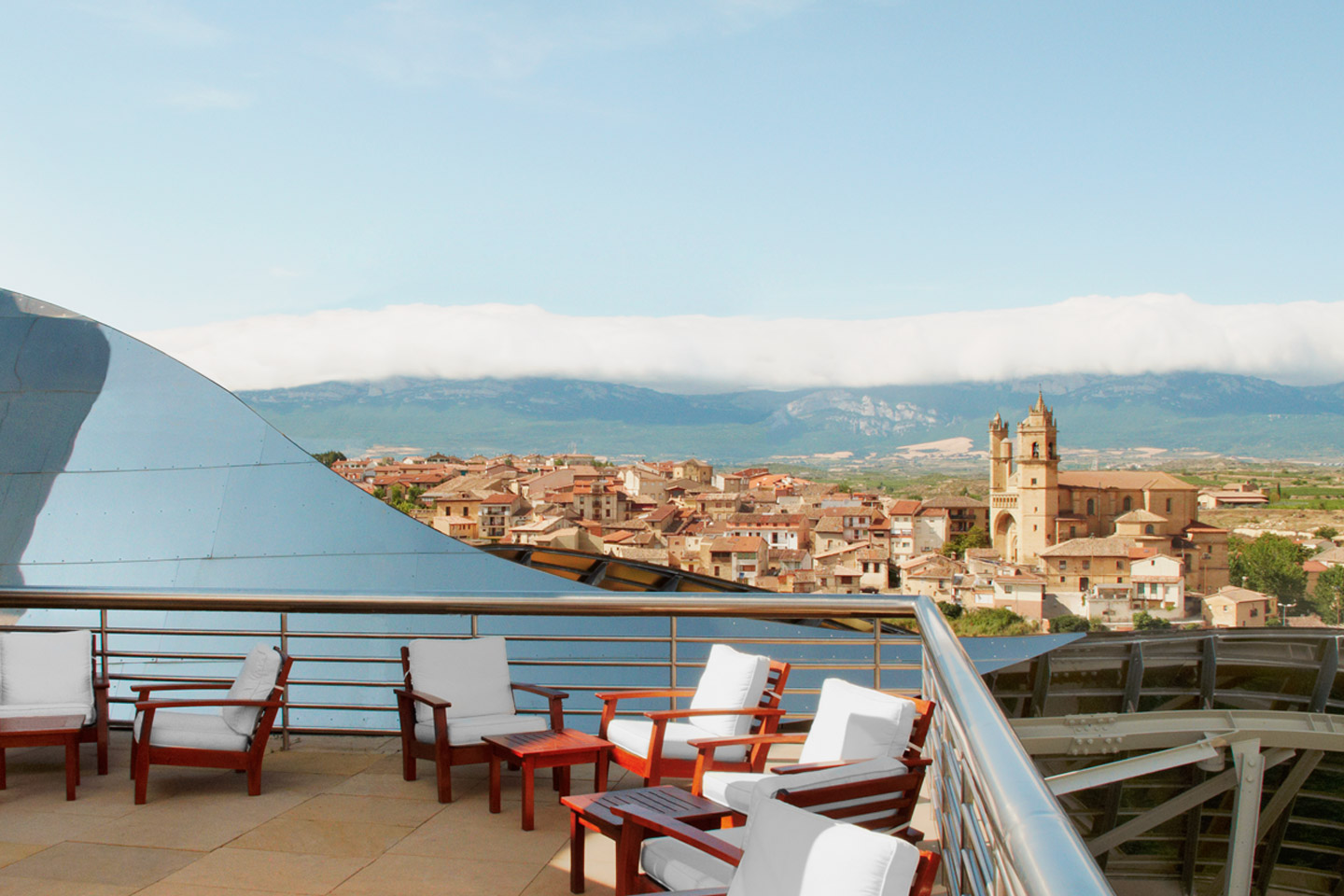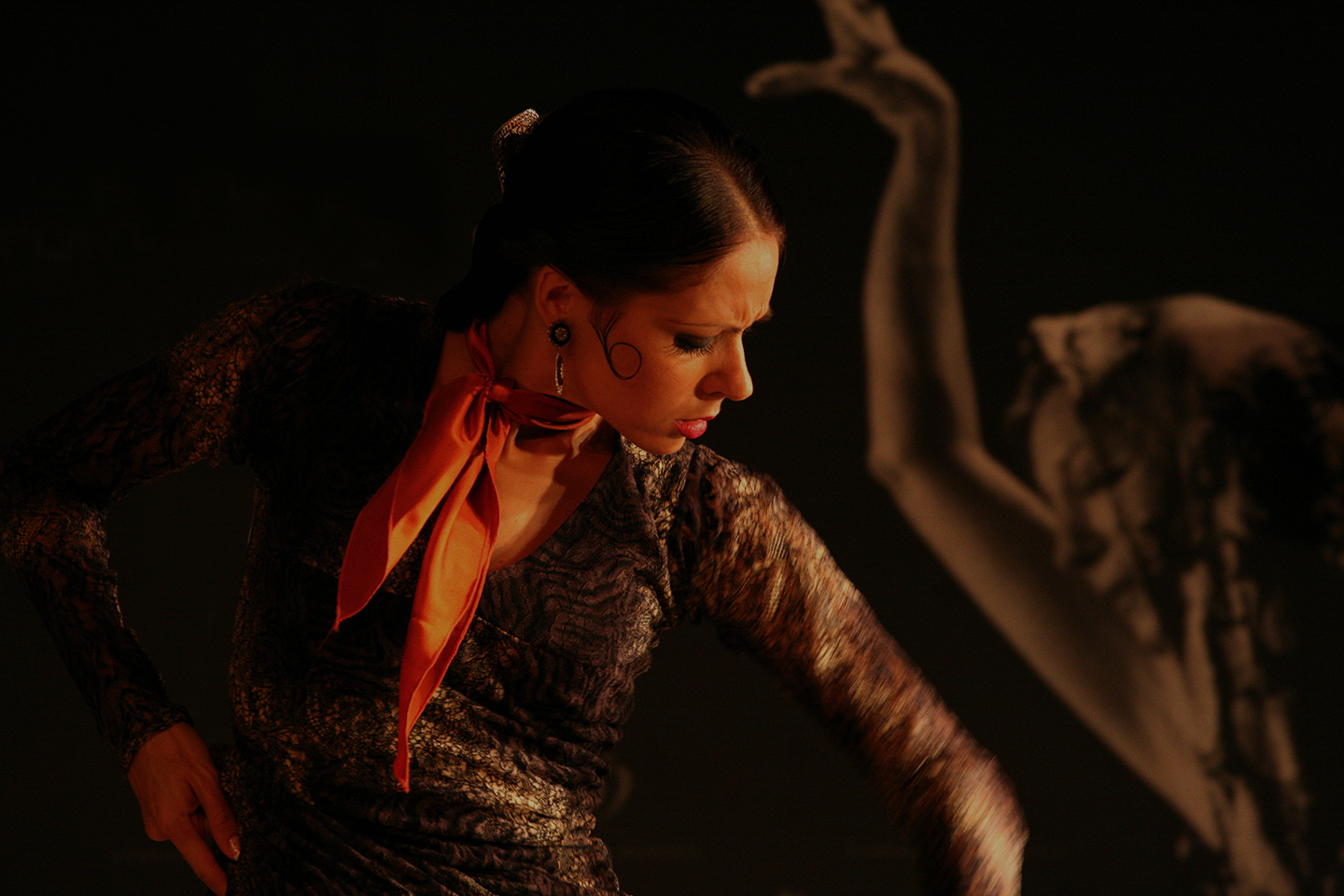The love of good food and good wine is not a surprise when talking about Spain. This itinerary will take you through a route of the senses, starting from Madrid, the capital, and up to San Sebastian. From tapas and vermouth to pintxos and txakolí, through the most famous wine regions of Spain, the Ribera del Duero and La Rioja, you can discover the diversity of landscapes, culture, way of life, flavors and... much more!

WINE ROUTE FOR THE SENSES
Day by Day Itinerary and suggested Accommodation
Day 1: Arrival and transfer to your hotel. Arrival in Madrid and private transfer to the hotel.
3-night accommodation at The Principal Hotel*****
Day 2: Visit Madrid. In this full-day tour, our expert local guide will show you the most emblematic areas of Madrid, from Madrid de los Austrias district to the most picturesque and lively avenues and squares such as the Gran Vía, the Barrio de las Letras, the Retiro Park or Puerta del Sol. You can also visit monuments such as the Royal Palace or the Prado and Reina Sofía Museums. If you ask us, we can also reserve a place at night to enjoy the best flamenco show in the capital.
Day 3: Visit Toledo. In this full-day tour with driver and guide, not only can you enjoy an impressive panoramic view of the birthplace of the painter El Greco from the Tagus River, but you can also enter its narrow streets to visit its many monuments, which are footprints visible of the three religions that for centuries coexisted tolerably: Christians, Arabs and Jews. Our guide will suggest the best place for lunch.
Day 4: Transfer to the Ribera del Duero (Valladolid province). This region is a natural jewel that will surprise you in every way and where you can enjoy some activities related to wine and gastronomy. We suggest taking the day off or visiting the facilities of your accommodation, the former abbey where the hotel and the winery are located, where you can make a private tasting of its wonderful wines.
2-night accommodation in: Abadía Retuerta LeDomaine *****
Day 5: Full day tour to the Ribera del Duero. Our expert guide and driver will accompany you during this intense journey of wine tourism and culture. You can visit the city of Peñafiel, its Castle and Provincial Wine Museum, the Monastery of Valbuena and, above all, the most modern wineries, whose architectural design has been made by international architects, and the most traditional ones, some still excavated in the stone. You can also taste the best wines and do not miss the roast suckling lamb in the region! The endless landscapes of vineyards of the Ribera del Duero will remain forever in your retina.
Day 6: Transfer to La Rioja. The journey takes about two hours from La Ribera del Duero. During the same, we suggest you make a stop in the city of Burgos to visit its incredible Gothic cathedral on your own. Upon arrival in La Rioja, we suggest you have the day off to enjoy the facilities of your accommodation. Visit its winery with wine tasting, some wine therapy treatment, etc.
2-night accommodation at Marqués de Riscal Hotel *****
Day 7: Full day tour through La Rioja Alta. This full-day tour of La Rioja is perfect for photography and wine lovers and those who value a more authentic and less touristy experience. Enjoy a trip out of the ordinary in La Rioja in its part of Alava, far from the crowds. Our local expert and driver will pick you up at your hotel and will guide you through some picturesque villages nestled in the hills, beautifully preserved medieval towns and fantastic landscapes. There is a great variety of history to explore in this scenic region to give up a real atmosphere from another era. You could visit towns like Laguardia, Briones or Elciego. During the day, you will have different visits to wineries (subject to availability), for example, 2-3 boutique wineries to taste their wines. In addition, since La Rioja is also a land of gastronomy, you will enjoy a traditional and homemade lunch served in a private underground cellar under a 12th-century castle. After this intense day, our guide and driver will take you back to your hotel.
Day 8: Transfer to San Sebastian. It takes approximately two hours to reach San Sebastian from La Rioja. Located on the east coast of the Basque Country, we suggest having a free day or taking a guided tour of the "Casco Viejo" of the city and enjoying a pintxo route (as tapas are called in the Basque Country) with our expert local guide during the late afternoon. Enjoy the indications of our gourmet guide and get to know this icon of the lifestyle of the Basques up close.
4-night accommodation at María Cristina Hotel *****
Day 9: Excursion to Zumaia & Getaria village. Just down the coastline from San Sebastián is a beautiful, unique village, rich in food culture and history, and an unforgettable stretch of coast famous for its “flysch” rock formations. Join our local expert guide on an exploration of Zumaia’s famous beaches and Getaria, the picturesque nucleus of fishing, txakoli winemaking, and grilled seafood.
Start your excursion with a visit to Zumaia’s famed flysch, spectacular rock formations in the Basque Coast Geopark. We explore this geological wonder and the beach made famous in Game of Thrones, before making our way to the little-known gem of Getaria. Still one of the most important entry points in the Basque Country for fresh tuna and shiny Cantabrian anchovies, we stroll through its cobblestone streets with our expert guide. After a tour of the village, head up to a txakoli bodega for a unique tasting that will take you straight to the heart of Basque flavors. Learn more at the source about this fizzy, almost salty white wine, which is firmly rooted in its local terroir and, at the moment, experiencing a renaissance. Finish with a stop in the bustling surfer village of Zarautz, where you will toast over pintxos and wines with your guide and new friends in a mini-tour of the local pintxo scene.
At night, for dinner, we can reserve for you one of the Michelin star restaurants in the city or surroundings.
Day 10: Excursion to Bilbao. Visit today the former industrial capital of the Basque Country, today converted into a cosmopolitan and accessible city. Upon arrival in the morning, you can enjoy a walk along the banks of the Nervión estuary, the modern area of the village, and visit the famous Guggenheim Museum or even take the cable car to the Mirador de Artxanda, to get the best views from the city. Then, visit the historical center of Bilbao, and stroll along its "7 streets" where you can have your pintxos lunch in any of its many taverns or an elegant restaurant. In the afternoon, our driver can take you to visit the entire estuary from the maritime museum area to Getxo village, where the estuary flows into the Cantabrian Sea and where you can enjoy the views of the Bizkaia Bridge declared a World Heritage Site by the UNESCO.
Day 11: Excursion to the French Basque Country. Today is the day to cross the border and visit the so-called Iparralde. Travel back in time, to the Belle Époque, and enjoy with our guide an enjoyable journey from San Sebastian passing through the landscapes of Pasajes, Irún, Hendaye ... Upon arrival in Biarritz, you can walk through its streets and taste a selection of cheeses, wines and seasonal products. Enjoy an aperitif before visiting the charming village of San Jean de Luz, where you will have the opportunity to discover French cuisine thanks to the food by the sea that you will enjoy before returning to San Sebastian.
Day 12: Private transfer to San Sebastián Airport or Bilbao. Let yourself be carried away by our driver on this last trip to the chosen airport.

CITIES AND TOWNS ON THE ITINERARY
If you wish to know a bit more about the places to go
Madrid: Strategically located in the heart of the Iberian Peninsula, it is the Capital City of Spain and therefore, one of the most touristic and important cities of the country. Because of its central location and high altitude, the climate of Madrid is characterized by warm dry summers and cool winters. Madrid is a city of great monuments. Among its highlights are the medieval center dating back to the Habsburg Empire and the Prado Museum. As the capital, Madrid is home to the Royal family, the Spanish Government and many other national institutions. The town has a long and fascinating history and all over Madrid, there are monuments and museums of great artistical value. It is a city full of life where travelers will feel welcome. Enjoy the street life and the numerous tapas bars and cafes where you will enjoy the “madrileños” passion for life.
Toledo: Located on the banks of the river Tagus, was known as Toletum during the Roman presence before the 2nd century BC. A very important area for a long period in history, Toledo became known as the “city of the three cultures”, for Christians, Arabs and Jews dwelled together here for centuries. This accounts for the incredible cultural legacy to be found here, which led to the declaration of World Heritage by UNESCO. In Toledo, you can admire several monuments with influences from these different cultures, such as the Gothic Cathedral, the Mosque of Cristo de la Luz, the church of Santo Tomé, where you can find a famous painting by El Greco, and the Alcazár Fortress.
La Ribera del Duero region: If there is a wine region in Spain that has achieved international prestige in recent decades, that is undoubtedly Ribera del Duero. Located mainly in the province of Valladolid, two hours north of Madrid, some of the most famous wineries in Spain are concentrated in this area. This Denomination of Origin extends for about 115 kilometers on both banks of the Douro River, encompassing the provinces of Valladolid, Burgos, Soria and even a small area of Segovia. There are more than 50 wineries that can be visited in Ribera del Duero and the Tempranillo variety is the top priority, although the Regulatory Council allows the use of other varieties, such as Cabernet-Sauvignon, Merlot, Malbec and Garnacha Tinta, and with the exclusivity of Albillo for white wines. From a historical point of view, it should be noted that wine production in this area of Spain dates back more than 20 centuries, back to the time of the Romans. But it has been during the last century when the most modern elaboration systems have been learned. Thus, compared to the previous production of table wines, Ribera del Duero is currently synonymous with high-quality wines.
La Rioja region: Well known for its wineries with over 500 of them, and internationally famous for the great quality of its wines. The smallest region of mainland Spain, bordered by Navarre, Castile & Leon and Aragon. One of the most important wine-growing areas of Europe, it has a reputation bigger than its land area. Extending along the Ebro River, the region is practically split into two, Rioja Alta which has a great deal of rainfall and has a mild climate, and Rioja Baja which is a hotter and more arid area, similar to Aragon. The province capital, Logroño links the two areas. The most popular places to visit are Logroño and Haro, known for their wineries. Apart from the wine, this region has a lot of cultural attractions and amazing natural attractions with Mediterranean forests, high-mountains areas and beautiful landscapes.
Basque Country: Located in northern Spain, is well known for its really diverse landscapes. Between wild and isolated beaches, kissed by the Atlantic Ocean, and high and Rocky Mountains, you will be captivated by its natural wonders. Rich in History and Culture, Basque Country has its own language, the Euskara, considered one of the oldest languages of Europe. Due to the ocean breeze, you can expect moderate temperatures, even when the rain falls – something that is not so rare among the region.
San Sebastian: A charming and romantic city. The Concha Bay is its most iconic site, with a big promenade along the sea, where locals and tourists go to enjoy the beautiful view. Keep in mind that San Sebastian is the place where you will like to eat. The city, besides being popular among surfers, is also well known for its remarkable culinary scene: from the seven restaurants in Spain awarded with 3 Michelin stars, three are in San Sebastian.
Bilbao: A unique city, surrounded by dense forests, high mountains and beautiful beaches. It is a privileged destination, where the past meets the future. Historic monuments, like the Cathedral-Church of Bilbao and the Basilica of Begoña, both from the 16th century, coexist with modern architectural projects, like the Guggenheim Museum and the Isozaki Towers, buildings that are catching the World’s attention. These recent investments have been crucial for the regeneration of the city as a dynamic metropolis.





